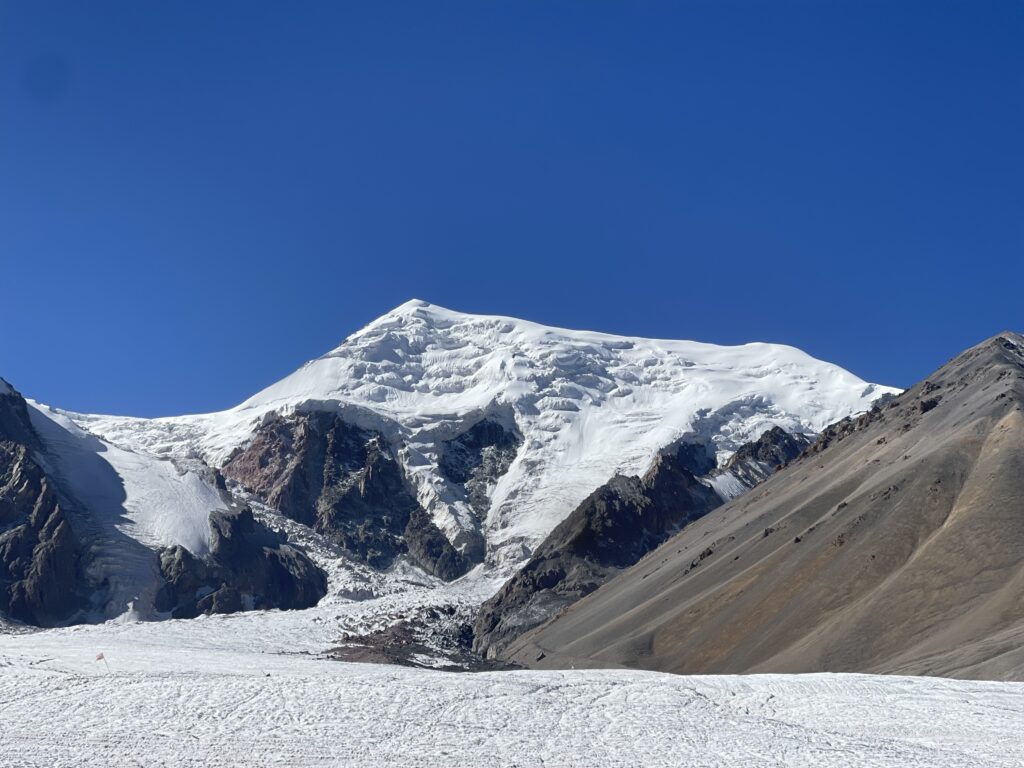
Amnye Machen (also spelled Amne Machin, A’nyê Maqên, or A’nyê Machin) is one of the most sacred mountains in Tibetan Buddhism, revered particularly by the Amdo Tibetans. Located in the Qinghai Province of China, it is part of the Kunlun Mountain Range and has a deep religious, cultural, and geographical significance.
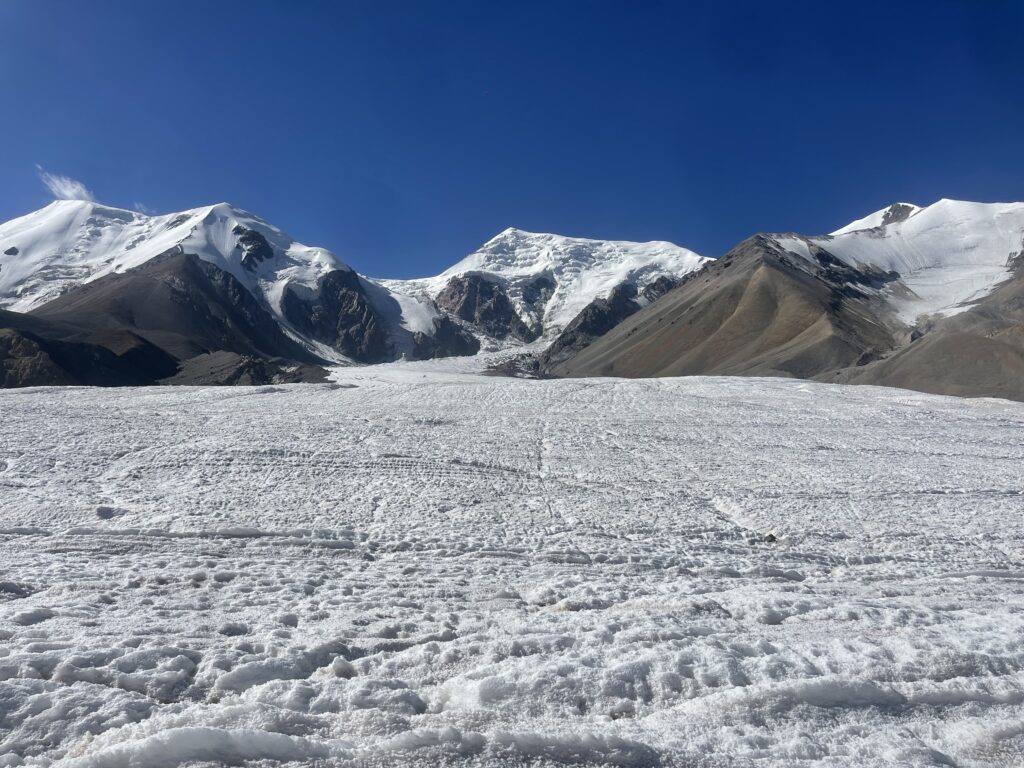
Amnye Machen rises to an elevation of about 6,282 meters (20,610 feet), making it one of the highest peaks in the eastern Tibetan plateau.
It is situated in the Golok region of Amdo, a historical Tibetan area, and is part of the larger Kunlun Mountains that stretch across northern Tibet and western China.
The mountain is often covered in snow and glaciers, creating a striking and formidable landscape that commands reverence.
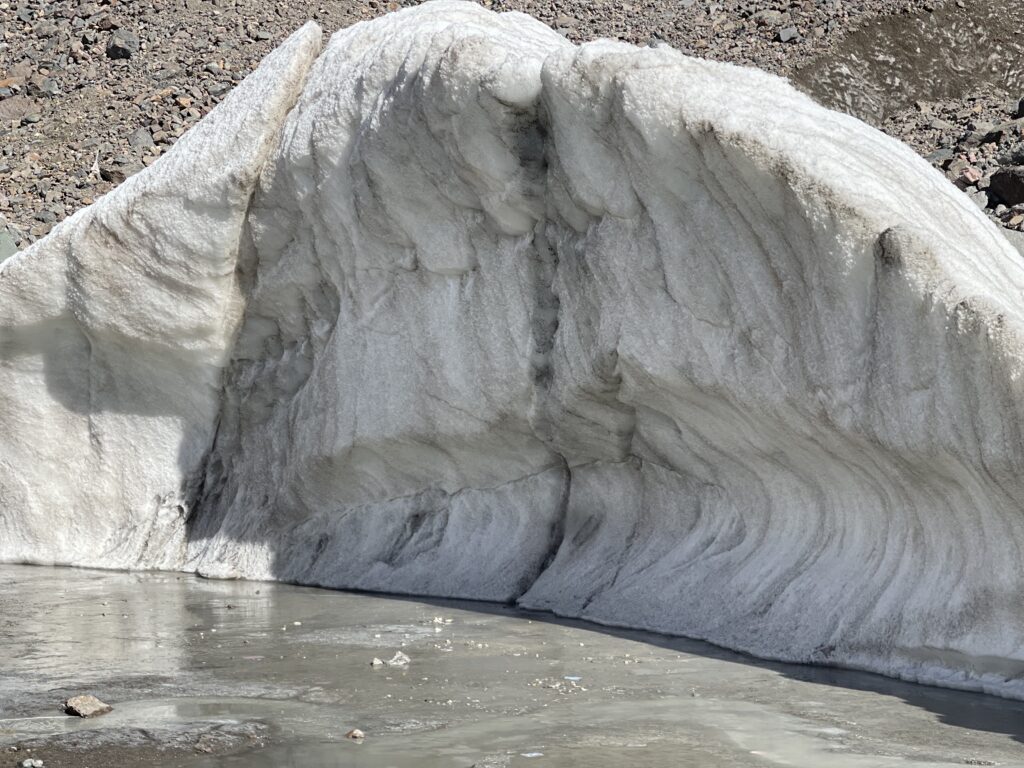
Amnye Machen is considered one of the four sacred mountains of Tibet, alongside Mount Kailash, Mount Kawa Karpo, and Mount Gampori. While Mount Kailash is associated with Shiva and holds significance for Hindus, Amnye Machen is deeply rooted in Tibetan Buddhist beliefs.
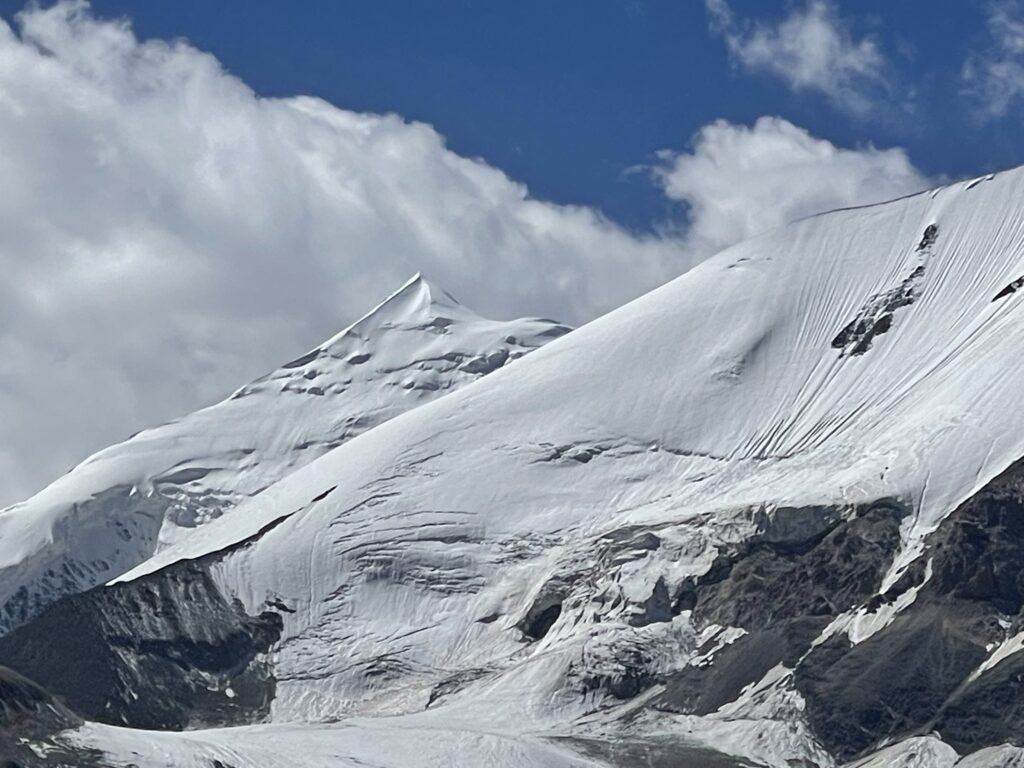
The mountain is believed to be the residence of the powerful protector deity Machen Pomra, a local mountain god who is worshipped for protection, blessings, and guidance. Machen Pomra is regarded as a guardian deity of the Golok people and is highly venerated throughout the Amdo region.
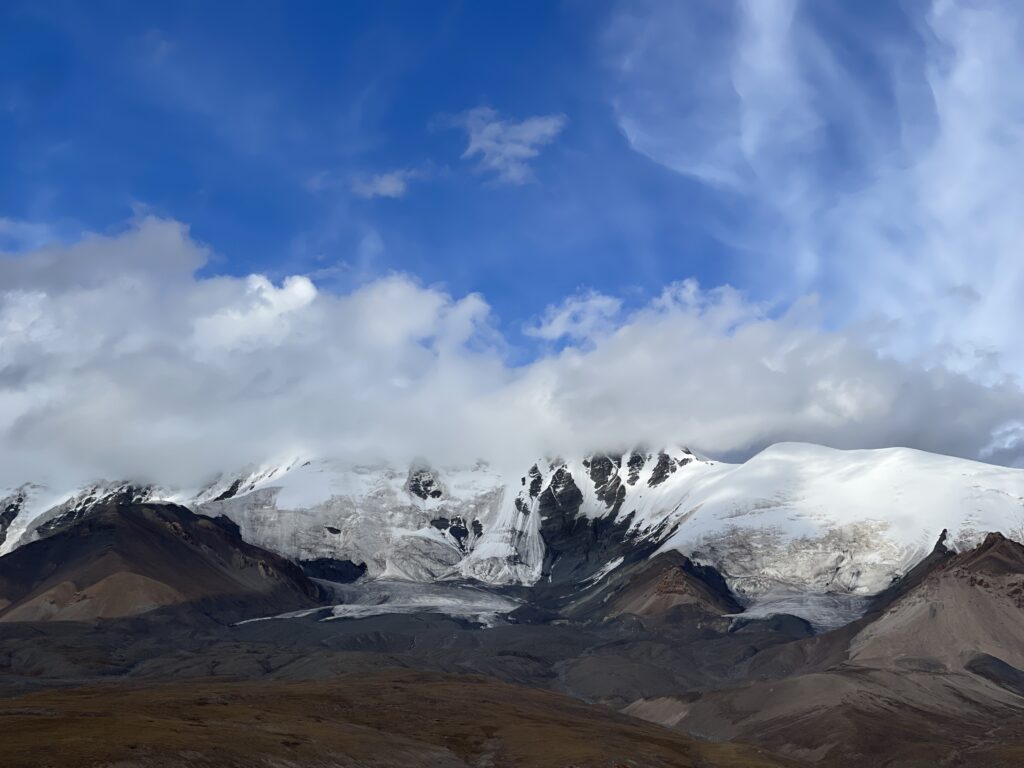
In Tibetan cosmology, sacred mountains like Amnye Machen are considered to be abodes of gods and spiritual forces, where humans and the divine intersect. Pilgrims come to seek blessings and protection from the mountain’s powerful spirit.
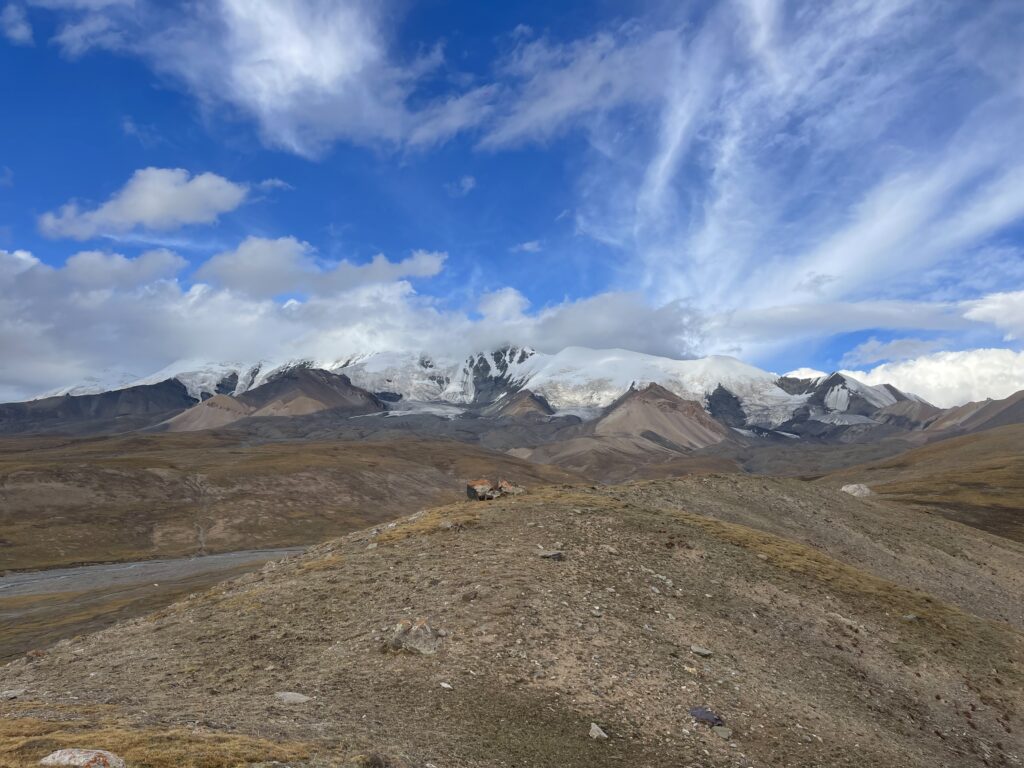
Pilgrimage to Amnye Machen is a significant spiritual practice for Tibetans and Buddhists. Devotees undertake the sacred journey to perform a kora (circumambulation) around the mountain, which is believed to accumulate great merit and purify negative karma.
The full kora around the mountain is about 120 to 200 kilometers (75 to 125 miles), depending on the route. The pilgrimage can take several days to complete, with pilgrims walking through rugged terrain, rivers, and high passes.
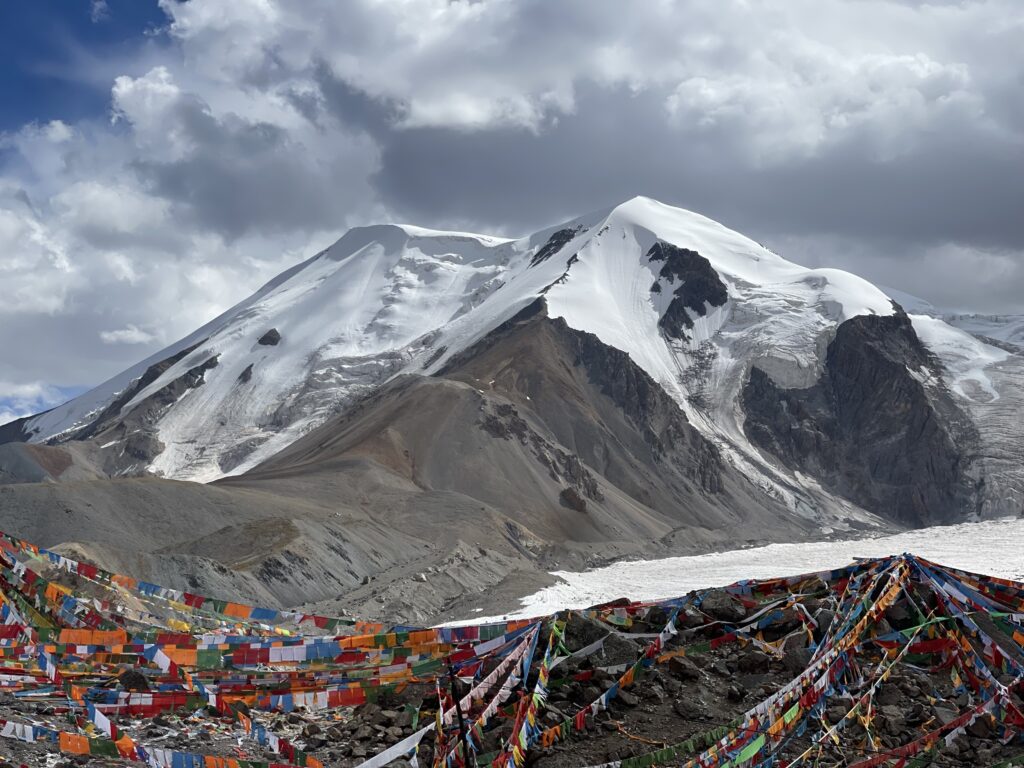
Performing the kora is an act of devotion, and some devout practitioners even do the circumambulation through full prostrations, covering the entire route while lying flat on the ground in reverence.
Amnye Machen holds significant cultural importance for the Golok Tibetans, who live around the mountain. The mountain and its protector deity, Machen Pomra, are integral to the identity of the Golok people, and festivals and rituals are often performed in honor of the deity.
Oral histories, songs, and legends about the mountain are passed down through generations, connecting the people to their land and spiritual heritage.
The area around Amnye Machen has historically been isolated, preserving much of its nomadic culture and Buddhist traditions.
Historically, the area around Amnye Machen was remote and difficult to access, which added to its mystique and spiritual allure.
Early explorers and adventurers, such as the British mountaineer H.W. Tilman in 1930s, and later teams in the mid-20th century, made attempts to measure and explore the mountain. These expeditions helped to bring global attention to Amnye Machen.
There were also early miscalculations about the mountain’s height, with some explorers believing it to be higher than Mount Everest until more accurate measurements were taken later.
Amnye Machen is home to a range of glaciers, high-altitude ecosystems, and rare wildlife, including species such as the Tibetan antelope and snow leopards.
The mountain’s proximity to the Yellow River’s upper course (known as the Ma Chu in Tibetan) makes it part of an important watershed, contributing to the water supply of the entire region.
Tibetans offer prayer flags, burn incense, and make offerings at significant points along the kora path, as part of their devotion to Machen Pomra and the mountain’s spirits.
Some pilgrims and locals believe that simply viewing Amnye Machen from afar can confer blessings and spiritual merit. Others engage in practices such as meditation and mantra recitations while circumambulating.
 Tibet World Travel Tibet Tour, Tibet Trip, Tibet Travel, Tibet Train, Tibet Trekking,
Tibet World Travel Tibet Tour, Tibet Trip, Tibet Travel, Tibet Train, Tibet Trekking,
